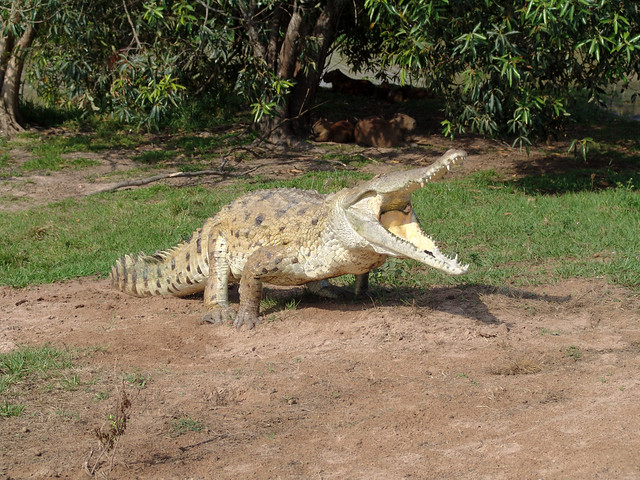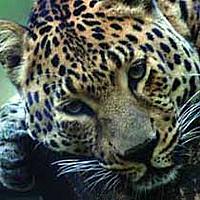.
Hello and welcome to my latest blog with hopefully everyone is getting organised for Christmas with the festive period getting closer by the day! This week sees the start of a new section to my blog called "Ten Facts On" which starts with a look at one of my favourite animals the Honey Badger. The endangered species section investigates the plight of the Santa Catalina Island Rattlesnake and I also include a light hearted moment or two to finish the blog off. I hope you enjoy it and feel free to give feedback.

Ten Facts On : Honey Badger Mellivora capensis.
1 Despite what their name suggests, when raiding the hives of Honey Bees, the Honey Badger prefers to feed on the nutritious Bee brood. Other recorded prey species include Scorpions, Insect Larvae, Beetles Lizards, Rodents, Birds, young Crocodiles, and Snakes including venomous species such as Adders, Mambas and Cobras. Jackals, Antelope, juvenile Foxes and Wild Cats are also taken.
2) Honey Badgers detect their prey mainly through their excellent sense of smell and digging, during a single foraging period, they are capable of digging up to 50 holes and over a 24 hour period, can cover over 40 km!
3 The home range of a male Honey Badger can be more than 500 km squared and can overlap over females and other males territories a females range by contrast is much smaller varying from 100-150 km squared.
4) Honey Badgers studied in the Kalahari were observed to have a gestation period of 6-8 weeks and will typically give birth to no more than two cubs.
5) The cubs of the Honey Badger are born naked and blind in a hole prepared by the female and are via the mouth, carried to a new den site every 2- 5 days.
6) The Honey Badger belongs to the Mustelid family which includes 8 other species of Badger as well as Otters, Weasels and Wolverines.
7) After man, the Honey Badger is thought to cause the highest amount of destruction to Honey Bees by a mammalian predator in Africa, this leads to inevitable conflict between farmers and Honey Badgers.
8) Although they are not classed as Endangered by the IUCN redlist, Honey Badgers to face levels of persecution especially outside of protected areas. Their pelts are targeted because of their reputation for being brave and fearless, they are also targeted for traditional medicine and bush meat. Honey Badgers also fall victim to poisoning and trapping intended for animals such as Black - backed Jackals Canis mesomelas .
9) The Honey Badgers scientific name Mellivora means honey eater of the Cape due to their diet preferences and as a result of this being the place they were first described, "The Cape of Good Hope South Africa".
10) Although excellent predators, Honey Badgers are opportunistic and will scavenge on kills made by other predators and have even been known to raid bins at campsites.
All information sourced from http://www.honeybadger.com/index.html

http://www.informafrica.com/wp-content/uploads/2012/01/honeybadger-ratel.jpg
Endangered Species : Santa Catalina Island Rattlesnake Crotalus catalinensis.
The future of the Santa Catalina Island Rattlesnake is extremely uncertain, classed as critically endangered by the IUCN, there is no doubt that this species is in a major crisis and faces an uphill battle to survive.
As the name suggests, this species of snake is endemic along with another six species of reptile to the island of Santa Catalina off the coast of Loreto, Mexico. The Island is made up of numerous rocky hillsides and dry creeks otherwise known as arroyos. The Santa Catalina Rattle snake prefers arroyos with dense vegetation however will also inhabit rocky and scrubby hillsides and can even occasionally be found in areas of sandy soil. The species is almost exclusively nocturnal and 70 percent of its diet is made up of the only ground living mammal on the island the also endemic Santa Catalina Deer Mouse Peromyscus slevini.
There are several threats to this species of snake but by far and away the most serious is the persecution of the species through killing and illegally collecting them. Local fisherman it is claimed have been tempted to take collectors to the island as they can potentially earn as much money through these trips as they do a week of solid fishing. It's naturally gentle and passive nature means the species is an easy catch. A population of feral cats which have since been eradicated, certainly contributed to putting a large dent in an already fragile population, as numerous signs of predation would confirm. Finally the species dependence on one particular prey item leaves it vulnerable and heavily reliant on the fortunes of a species that make up a large percentage of its diet.
Eradicating cats from the island is undoubtedly a start but such is the fragile grip on survival the species clings to, unless further research and conservation action is taken, we could once again be forced to resigning another species to the history books.
Information found in this article was taken from the IUCN.
Finally from myself a small bit of amusement.
I hope you have enjoyed my blog this week, I leave you with a light hearted look at the Natural World. Until next week goodbye and thanks for reading,
George.









